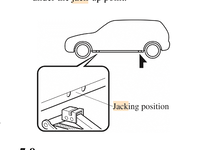Oblivion247
Member
- :
- 2015 Cx5 GS
Hi,
I was jacking up the CX5 using the front cross member, is there supposed to be a grey metal cover over top it or something. I used that and now its all bent. I can't upload a pic of it.
I was jacking up the CX5 using the front cross member, is there supposed to be a grey metal cover over top it or something. I used that and now its all bent. I can't upload a pic of it.

